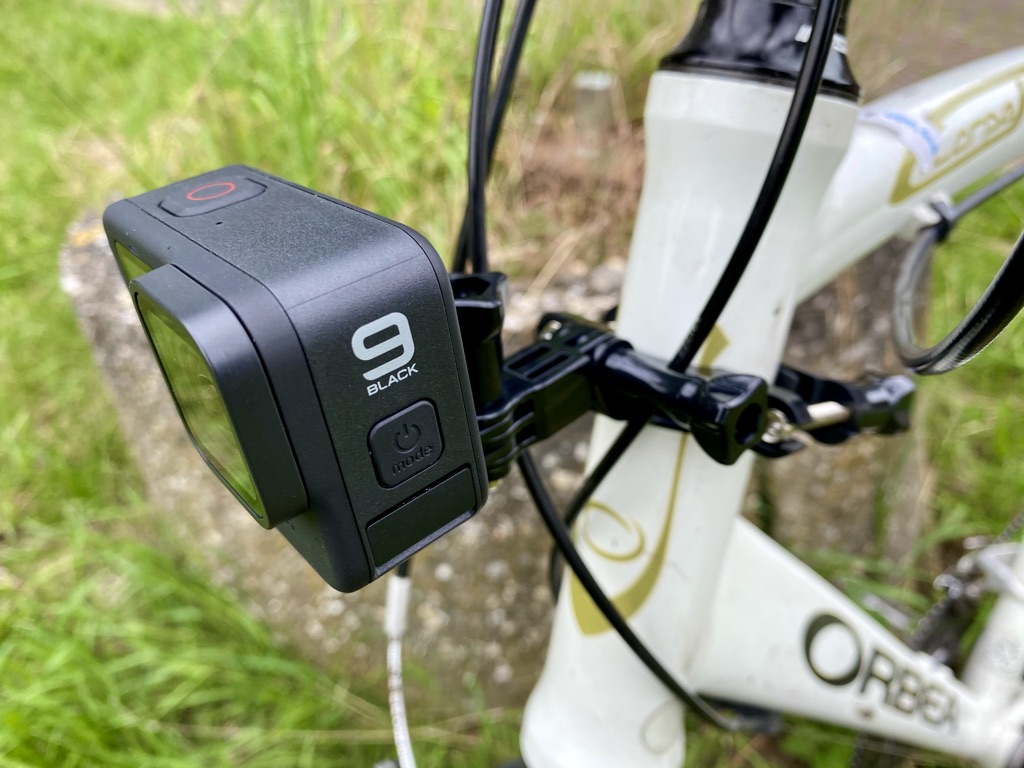I've been looking for a way to record my bike rides, and made the mistake of thinking that an actual gimbal (Pocket 2) MUST be better than software stabilization (GoPro). Long story short: after a lot of hassle I replaced the DJI Pocket 2 with the GoPro Hero 9, and never looked back. Could software stabilization actually outperform a gimbal? A comparison of the stabilization in the GoPro Hero 9 vs the DJI Pocket 2
Software stabilization has a bad name. From rolling-shutter artifacts to huge crops and resolution loss, a physical gimbal seemed like the preferable solution. So I went out and got the DJI Pocket 2 and (oh the naivity!) a bracket to attach it to my bike...
I soon found out that the bike transfers every little vibration over to the poor little Pocket, so it was time for plan B: I bought an actual vest to attach the DJI Pocket 2 to. Although the vest wasn't really my size, it helped removing the micro-jitters from the footage. But still I had to drive carefully and keep my body still and upright all the time. It wasn't the the set-and-forget option I had envisioned. Another downside of the vest was that I couldn't film sideways or at low angles. I was limited to that one straight-on perspective.
When the GoPro Hero 9 was lowered in price, I bit the bullet, and it became immediately clear this was a much better solution. I could retire the vest and mount the GoPro directly to the bike and still get smooth shots in situations the Pocket 2 struggled with. I slammed my bike over brick-roads and cobble-stone alleyways and the GoPro's stabilization didn't break a sweat.
How can software stabilization be so good?
This got me wondering: why is the digital stabilization on the GoPro so much more effective than on large-sensor cameras, and with none of the stabilization artifacts? I think it comes down to a number of factors:
Smaller sensors have a faster read-out speed, leading to much less of the dreaded rolling -shutter effect that has become the tell-tale sign of digital stabilisation.
The GoPro Hero 9 has a very wide field-of-view and 20MP sensor, so there's a lot of room to crop.
Shooting in 60fps also helps software stabilization, because the difference between each individual frame is smaller, and there's more information to work with.
Due to the crop, the GoPro can rotate the image in order to keep the horizon level. This principle has been taken even further by the Insta360 Go 2, which actually has a square sensor! For an in-depth look at the Go 2's sensor and cropping, check out this excellent video by The Running Dutchman.
The GoPro's stabilization does come with some loss in detail, and in many situations you might not need stabilization on every axis, so in those cases the DJI Pocket 2 might give you better results. But when in comes to stabilizing harsh and sometimes uncontrolled camera shake, like mounting it on a bike, the GoPro has the edge.
Another important consideration is that the DJI Pocket 2 is quite fragile and keeping the gimbal clear when it's mounted to your chest, isn't always easy. Add to that the fact that the Pocket 2 has no waterproofing, so your trip could easily be cut short by a sudden cloud burst. The Pocket 2 just requires a lot more attention. It grabs more attention too, by the way: my GoPro set-up could easily be mistaken for a head-light ;-)
 My GoPro disguised as a head-light
My GoPro disguised as a head-light
My GoPro settings for the best stabilization
For the best stabilization on the GoPro Hero 9, use the following settings:
Resolution: 4K/25 or 4K/60 (preferable, see above). If you set the camera to 5K, there's less room to crop, which means slightly less stable footage.
Lens: Linear and Horizon Leveling
Hypersmooth: boost
Although I would never recommend this on any other camera: a high shutter speed reduces motion blur, which in turn helps the software stabilization
Also note that in low-light the software-stabilization has a much harder time to stabilize the footage, so if you plan on doing a lot of low-light stabilized shots, the Pocket 2 might actually be a better performer.
Conclusion
For large-sensor cameras, IBIS or a gimbal remain the best ways of stabilizing your footage, but small-sensor cameras benefit from faster read-out and higher framerates to mitigate the wobble and weirdness ususally associated with software stabilization. Of course, a lot more factors go into deciding between the DJI Pocket 2 and GoPro Hero 9, but if stabilization is your main concern, take a close look at the GoPro Hero 9.
Related Products
Purchasing through these links helps the Filmkit site, thank you!



